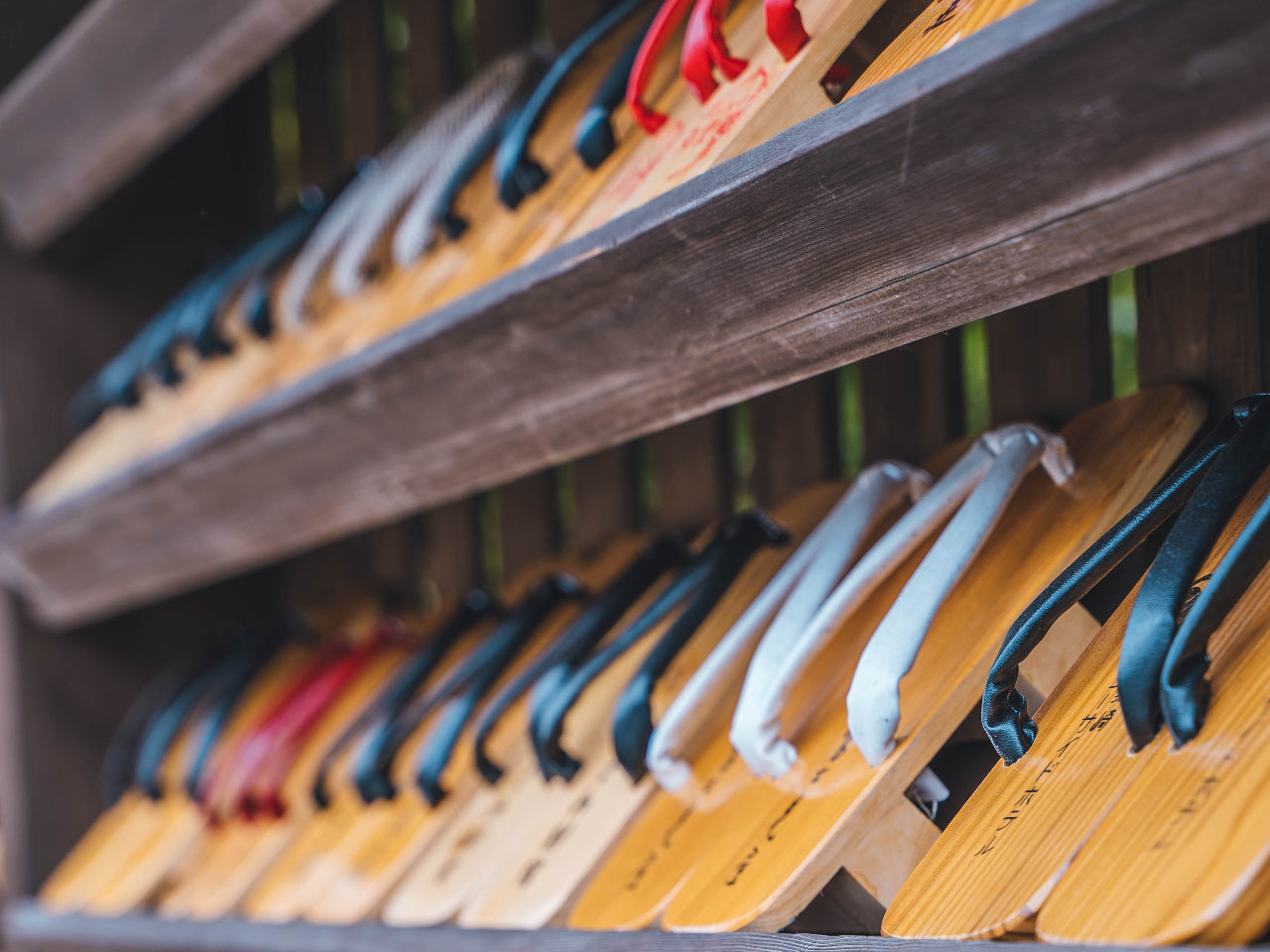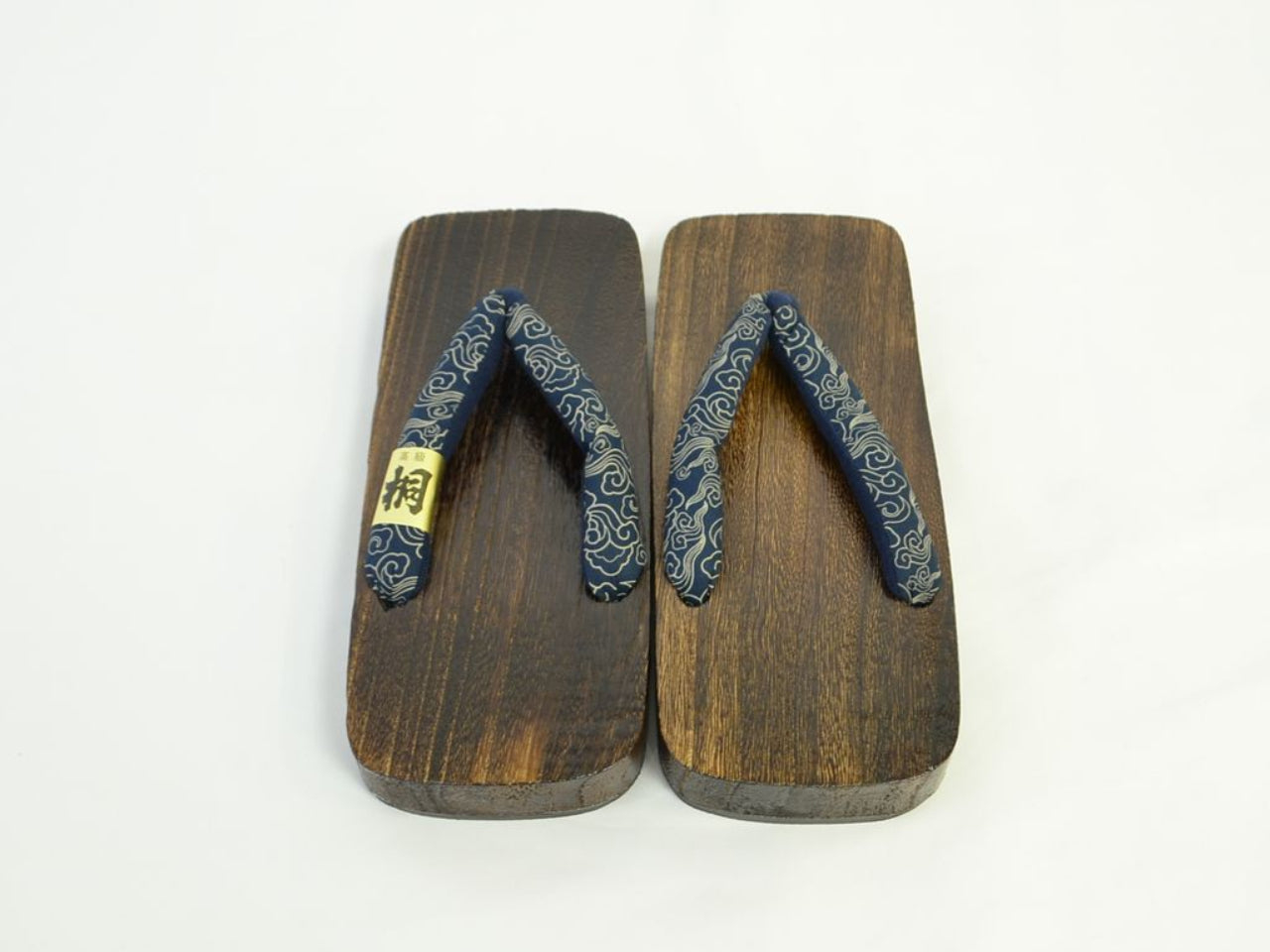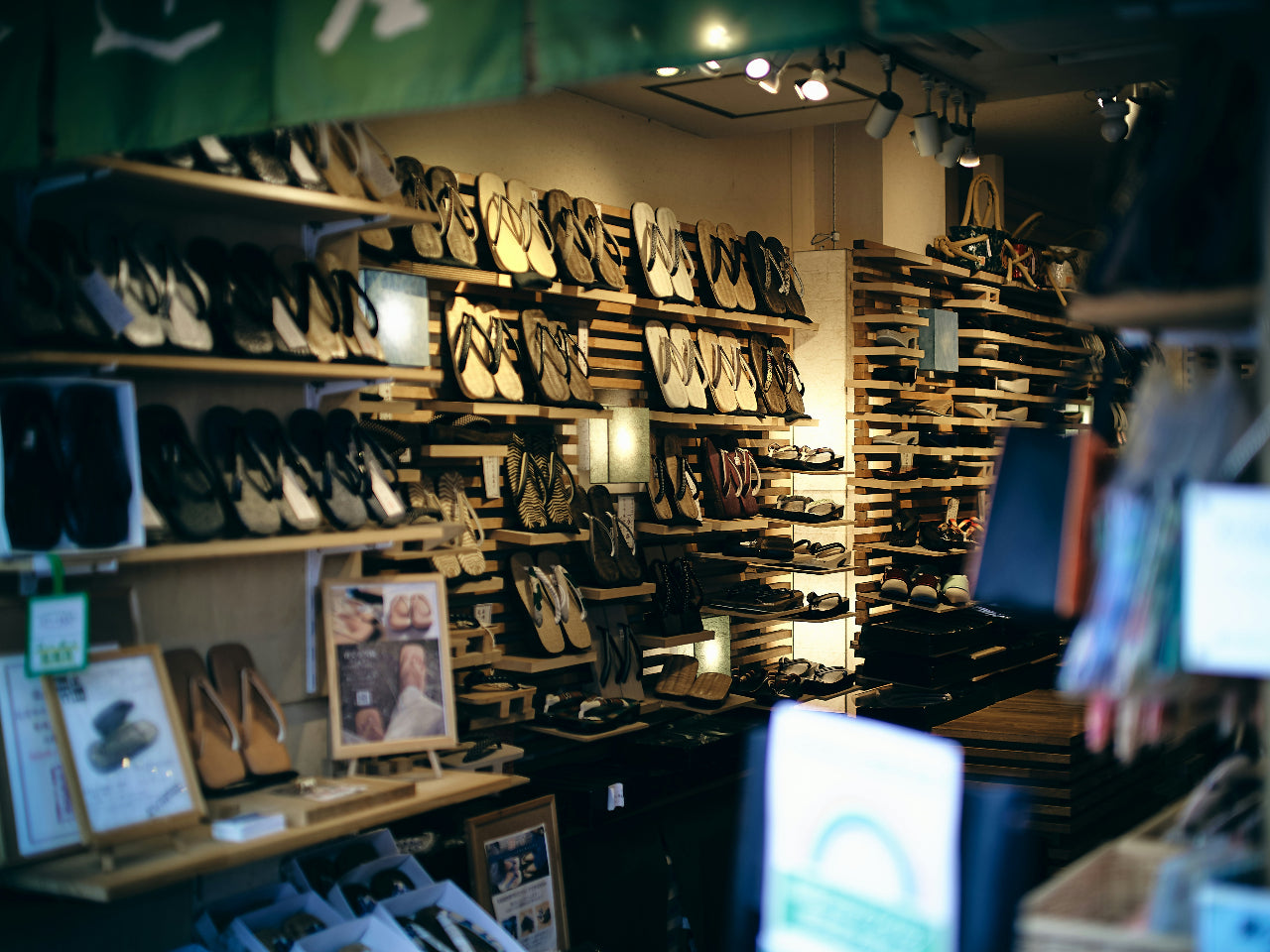The distinct "clack-clack" sound produced by the wooden soles against the ground has become synonymous with the presence of geta and is deeply ingrained in Japanese cultural memory. Geta sandals, characterized by their distinctive elevated wooden base and fabric thonged top, have held a significant place in traditional Japanese footwear for centuries. More than mere foot protection, these unique sandals are deeply intertwined with the rich tapestry of Japanese culture and history, contributing not only to practicality but also to a distinctive aesthetic and auditory experience.
In this blog post, we'll embark on a journey to explore these iconic Japanese sandals, delving into its origins, design, cultural significance, and contemporary relevance.
The History of Geta

The earliest versions of geta date back to around the 8th century during the Nara period, when they emerged as a practical solution for navigating muddy and uneven terrain. The elevated wooden sole served the purpose of keeping one's kimono from touching the ground, preventing it from getting dirty. Its audible element also serves a practical purpose, alerting others to the wearer's approach.
Geta are often associated with traditional clothing such as kimono, yukata, and other traditional garments, playing a crucial role in completing the ensemble for various cultural events, festivals, and ceremonies. Its styles evolved over centuries alongside clothing trends and craftsmanship improvements. Samurai began wearing geta to elevate their feet away from the filthy streets. After Japan reopened to the West in the 1800s, geta craftsmen incorporated more fashionable designs.
Following WWII, geta production declined temporarily as Japan modernized. But geta experienced a revival given a boost by the 1964 Tokyo Olympics showcasing Japanese culture.
In contemporary Japan, geta continues to make its presence felt, not only in traditional settings but also in the realm of fashion. Designers and fashion enthusiasts have embraced the versatility of geta, incorporating them into modern outfits to create a unique fusion of tradition and trend. Geta-inspired designs can be found in various forms, from casual streetwear to high fashion runways, showcasing the enduring appeal of this traditional footwear.
Details on Geta

Geta typically consists of a flat wooden base called the "dai," which is elevated by two wooden blocks known as "ha" underneath the sole, and held in place with fabric thongs called "hanao." The height of the blocks can vary, ranging from a few centimeters for everyday use to towering heights for special occasions and ceremonies. The choice of wood, the carving technique, and the style of the hanao all contribute to the overall aesthetic and comfort of the geta.
Today they remain popular for traditional outfits, festivals, and just embracing nostalgia. Artisans, often belonging to long-standing family businesses, continue to handcraft these wooden sandals using time-honored techniques passed down through generations. The dedication to preserving the authenticity of geta reflects a commitment to cultural heritage and a recognition of their enduring value.
Wearing geta, the traditional wooden sandals of Japan, carries not only cultural significance but also potential health benefits. One notable advantage is the improvement in posture. The elevated sole and forward tilt of geta encourage wearers to maintain a straighter posture, contributing to better spinal alignment and reducing the risk of posture-related issues.
Additionally, walking in geta requires greater effort from the leg muscles, particularly the calves and thighs. This increased muscle engagement can lead to toning and strengthening of the lower limbs. The wooden blocks underneath the geta provide a stable base, promoting enhanced stability and forcing wearers to engage their core muscles, contributing to improved balance and coordination.
In the realm of traditional Japanese medicine, the concept of reflexology plays a role. The raised platforms of the two geta can stimulate reflex points on the feet, potentially promoting better circulation and overall well-being.
Regional Styles of Geta

Geta come in diverse styles, some being specific to different regions of Japan. Here are some of the most prominent:
Tengu Geta: Named after the mythical creature "Tengu," these geta have a distinctive shape with a high, upturned front. The design is reminiscent of the long-nosed mask associated with Tengu folklore.
Pokkuri Geta: Characterized by their rounded, high wooden base, pokkuri geta produce a distinctive clacking sound when walking. They are often worn by maiko and are associated with Kyoto's traditional culture.
Urazori Geta: This style features an upturned back end of the wooden sole, providing additional stability and comfort. The design prevents the back of the geta from touching the ground, keeping it in better condition.
Okobo: While not strictly a type of geta, okobo are elevated wooden sandals often worn by maiko and geisha. They have a high, platform-like sole and are associated with formal occasions and traditional dance performances.
Koma Geta: These geta have a simple design with a flat wooden sole and are often used for casual, everyday wear. Koma geta are known for their comfort and practicality.
Rikyu Geta: Named after the renowned tea master Sen no Rikyu, these geta are characterized by their simplicity and minimalism. They are often associated with the tea ceremony and reflect Rikyu's emphasis on understated elegance.
Hanhaba Geta: Translated as "half-width geta," these sandals have a narrower design compared to standard geta. They are often worn by women and are considered more elegant and feminine.
Ippon Geta: "Ippon" means one, and these geta have a single tooth between the big toe and the other toes, providing a unique and distinctive look. They are popular for their simplicity and also for runners. Runners can use the kinetic energy given when using these shoes for running to aid in running faster.
How to Walk Properly in Geta

For new geta wearers, walking gracefully takes practice. Follow these tips:
Step solidly: Plant both of your feet firmly with each step to balance on the platform base. Take wider steps.
Distribute weight: Keep body weight centered between both feet to stay balanced.
Point toes forward: Angling feet outward eases stride but can seem unrefined.
Stand tall: Posture is key. Pull shoulders back to offset taller platforms.
Walk quietly: Lift and lower feet carefully. Don't loudly clack the teeth of the geta along the ground.
Go slowly: Rushing increases the chance of falling. Take it steady.

